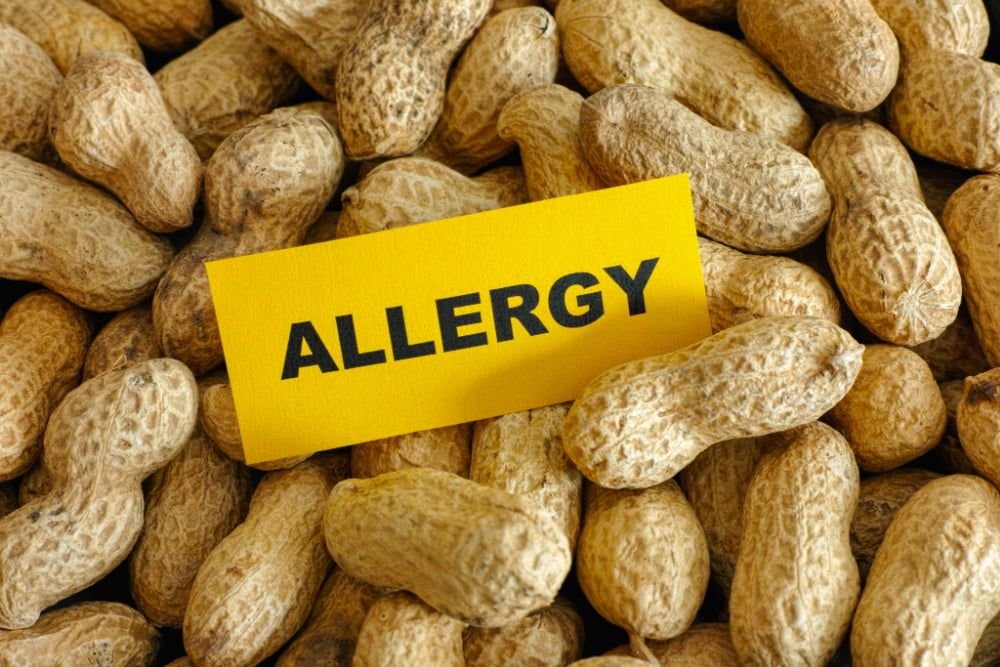What’s the real cause of peanut allergies?

What have we done?
Seems the public succumbed to terrible advice regarding peanut allergies, thus, causing the very allergy now so prevalent in children. But wait, it’s only a problem in certain areas.
Surgeon, Professor Marty Makary examines damage wrought when medicine closes ranks around inaccurate dogma
This morning, I read an article excerpted from “Blind Spots: When Medicine Gets It Wrong, and What It Means for Our Health” by Marty Makary, M.P.H. ’98. Used with the permission of the publisher, Bloomsbury.
Look at the stats: In 1999, researchers at Mount Sinai Hospital estimated the incidence of peanut allergies in children to be 0.6 percent, with most very mild. Yet, merely one year later, doctors noticed a surge of severe allergies. Why? Because the 1990’s was the decade of peanut allergy panic and speculations ran wild. What should we do? Unfortunately, there was one problem, The American Academy of Pediatrics (AAP), didn’t know what precautions to take, if any, and rather than admit they had no answers, they issued a recommendation for children zero to three years old, and pregnant and lactating mothers to avoid all peanuts. The AAP followed what the UK health department had recommended two years earlier: total peanut abstinence. And this in turn led to a rash of allergies, many of them severe.
How could “experts” make a recommendation citing a study that did not even support the recommendation?
Let’s look at an area in rural East Tennessee, where pediatrician Stephen Combs, ran against the grain and never followed the AAP’s guidelines. Combs did his residency at Duke Medical Center in North Carolina, where he trained under world-famous pediatric immunologist Rebecca Buckley. When the AAP released its guideline, Buckley recognized that it violated a basic principle of immunology known as immune tolerance: the body’s natural way of accepting foreign molecules present early in life. It was like the dirt theory, whereby newborns exposed to dirt, dander, and germs may then have lower allergy and asthma risks. Buckley confidently told her students and residents, including Combs, to ignore the AAP recommendation, and told them to do the opposite. She explained that peanut abstinence doesn’t prevent peanut allergies, it causes them.
Her explanation turned out to be prophetic.
It appeared that other countries never developed severe peanut allergies, and mild reactions were rare. Yet, in the US and Great Britain, things were running amok. Numbers of children were rushed to emergency rooms and by 2019, one report estimated that 1 in every 18 children had developed peanut allergies. In other words, they caused the very thing they were trying to avoid.
Gideon Lack, a pediatric allergist and immunologist in London, challenged the UK guideline. It “was not evidence-based,” he wrote in The Lancet in 1998. “Public-health measures may have unintended effects … they could increase the prevalence of peanut allergy.”
The AAP recommendation had created a vicious cycle. The more prevalent peanut allergies became, the more people avoided peanuts for young children. Tunnel-vision thinking had created a nightmare scenario for which the only possible solution seemed to be the total eradication of peanuts from the planet.
At a clinical trial randomizing infants to peanut exposure (at 4-11 months of age) versus none, Lack found that early peanut exposure resulted in an 86 percent reduction in peanut allergies by the time the child reached age 5 compared to children who followed the AAP recommendation. He blasted his findings to the world in a New England Journal of Medicine publication in 2015, finally proving what immunologists like Buckley had known for decades: Peanut abstinence causes peanut allergies. It was now undeniable; the AAP had it backward. Lack is now recognized as a hero in the field of allergy. But when he did his big study, he was heavily criticized.
It would take the AAP two years after Lack’s trial was published to reverse its 2000 guidance for pediatricians and parents. It would also take two years for the NIH’s NIAID division to issue a report supporting the reversal. Unfortunately, millions of children had been harmed by “groupthink”, and many still are feeling the effects.
Groupthink
the practice of thinking or making decisions as a group in a way that
discourages creativity or individual responsibility.


Leave a Reply